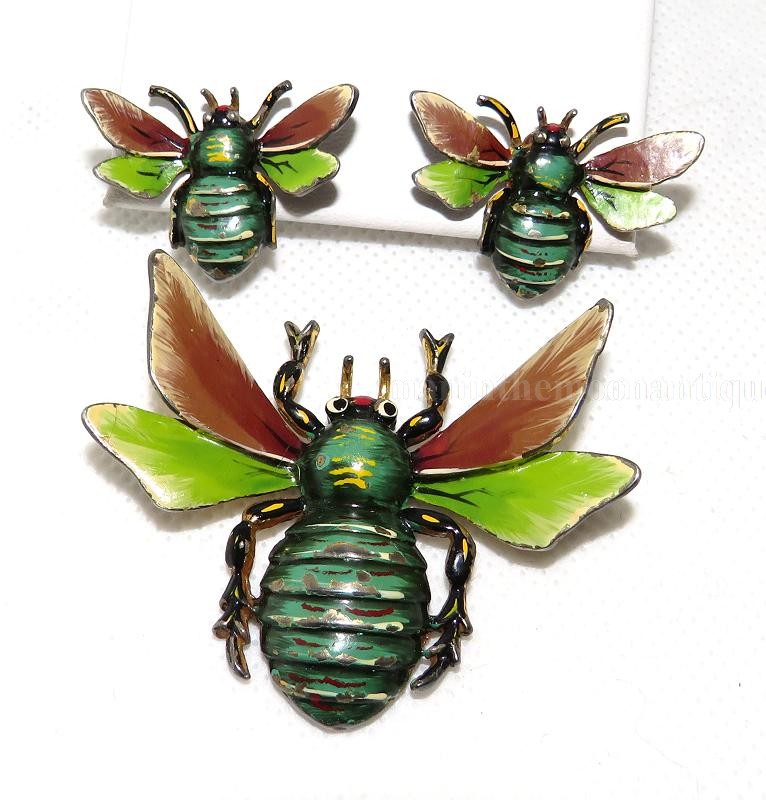Georgian Era Jewelry
1714 to 1830
Click on a selection below
-
Accessories: This category includes things like cufflinks, hair combs, watch chains, purses, compacts, boxes, hair ornaments, vinaigrettes, and chatelaine pieces.
-
Bracelets:
-
Cameos:
-
Coral:
-
Earrings:
-
Garnets: Victorian garnet jewelry was usually made using Bohemian garnets, which are from Czechoslovakia. They are a deep red color. They can be rose cut or flat cut, and can be foiled (backed by a small snippet of shiny tinfoil) or not.
-
Gold:
-
Gold Filled Jewelry:
-
Hair Jewelry: Hair jewelry was usually made to memorialize a departed loved one, or as a sentimental token of affection. It was also worn just to be fashionable. Hair could be made into jewelry by utilizing several different techniques.
A simple lock of hair could be curled into a locket.
Hair painting was done using macerated (cut up finely) hair. The pieces of hair were mixed with the pigment and applied with it or could be treated like mosaic tiles and carefully set in place. This technique gave texture to the grass at people's feet or gave leaves to willow trees.
Table working hair makes hollow woven tubes and shapes, like globes or acorns, and is done by weaving the hair through a hole in the center of a small table. The woven strands are weighted to keep the weaving smooth.
Flat, curled hair designs, glued into shape and then glued to the background. They can be cut into petals or leaves and decorated with pearls or gold wire. These are usually set under glass.
-
Lava Jewelry: Victorians loved to travel and took Grand Tours of Europe, purchasing souvenirs in every city along the way. Victorian lava generally comes from Vesuvius in Pompeii, Italy. The ruins of Pompeii were discovered in 1748, and became a popular tourist destination. Lava is a soft rock that can be carved easily. This lava is actually volcanic rock not really lava,but the term has stuck.
-
Lockets:
-
Necklaces:
-
Paste: Paste stones have been used instead of genuine stones. Paste is high lead crystal called "paste" because when heated it doesn't go all the way to a liquid but stays a malleable paste. These costume pieces are collectible in their own right.
-
Pendants:
-
Pins - Including Sash Pins: SASH PINS - Sash pins were large heavy pins with thick pin stems from around 1890 through 1915. The fashion at this time was to wear a sash over the shoulder and across the chest (like Queen Victoria); or with the lighter Edwardian fashions, around the waist. These pins were used to secure the sash to the dress and were large and heavy to pin through multiple layers of cloth. They come in many styles and motifs.
-
Rings:
-
Sets:
-
Silver and Sterling - Siam Sterling:
-
Snake Jewelry and Ouroboros: Snakes were a popular subject for Victorian jewelry. The Victorians were fascinated by the classical world which was coming to life for them due to many archaeological discoveries during this period. The classical peoples thought snakes were important,so the Victorians did too. Classical people considered snakes to be the ultimate worshiper of the Mother Earth because they laid their entire bodies down upon her. To them, snakes were sacred symbols. The Christian Bible turned the snake into an evil character to overcome this belief and aid in the conversion of pagans to Christianity. To the Christian philosopher, the snake sloughing off his skin represents the transmigration of souls - the soul passes from life to life in the eternal cycle of life and death.
Ouroboros - This is the oldest mystical symbol in the world. It came to the West from Egypt via Greco-Roman culture. "Ouroboros" means "the tail-devourer". It is a snake forming a circle by swallowing his own tail or forming a lemniscate (symbol for infinity).Ouroboros symbolizes Infinity. On a deeper level it symbolizes wholeness in the eternal cycle of life, death and rebirth - the eternal return. In mourning jewelry this would be resurrection and the rebirth of a soul into heaven.On a even deeper philosophical level, as Ouroboros swallows his tail (the past), it seems to disappear but is never really gone. It is only moved onto a internal plane. Out of sight, but not out of mind - never really gone from your heart.
-
Stuart Crystal: Stuart crystals were first made in 1649 to memorialize the execution by Cromwell of King Charles the first, of the House of Stuart. They were usually small pieces since showing support for an executed monarch could be dangerous. They were made by setting faceted rock crystal into gold or silver on top of a foil backing with a gold wire design on it. They could also have sentimental tokens, like a bit of hair or a piece of cloth, incorporated under the crystal. In 1714, Queen Anne, the last Stuart monarch, died. After this, Stuart crystals were still made, but they were personal mourning pieces or love tokens. They went out of style around 1735.

